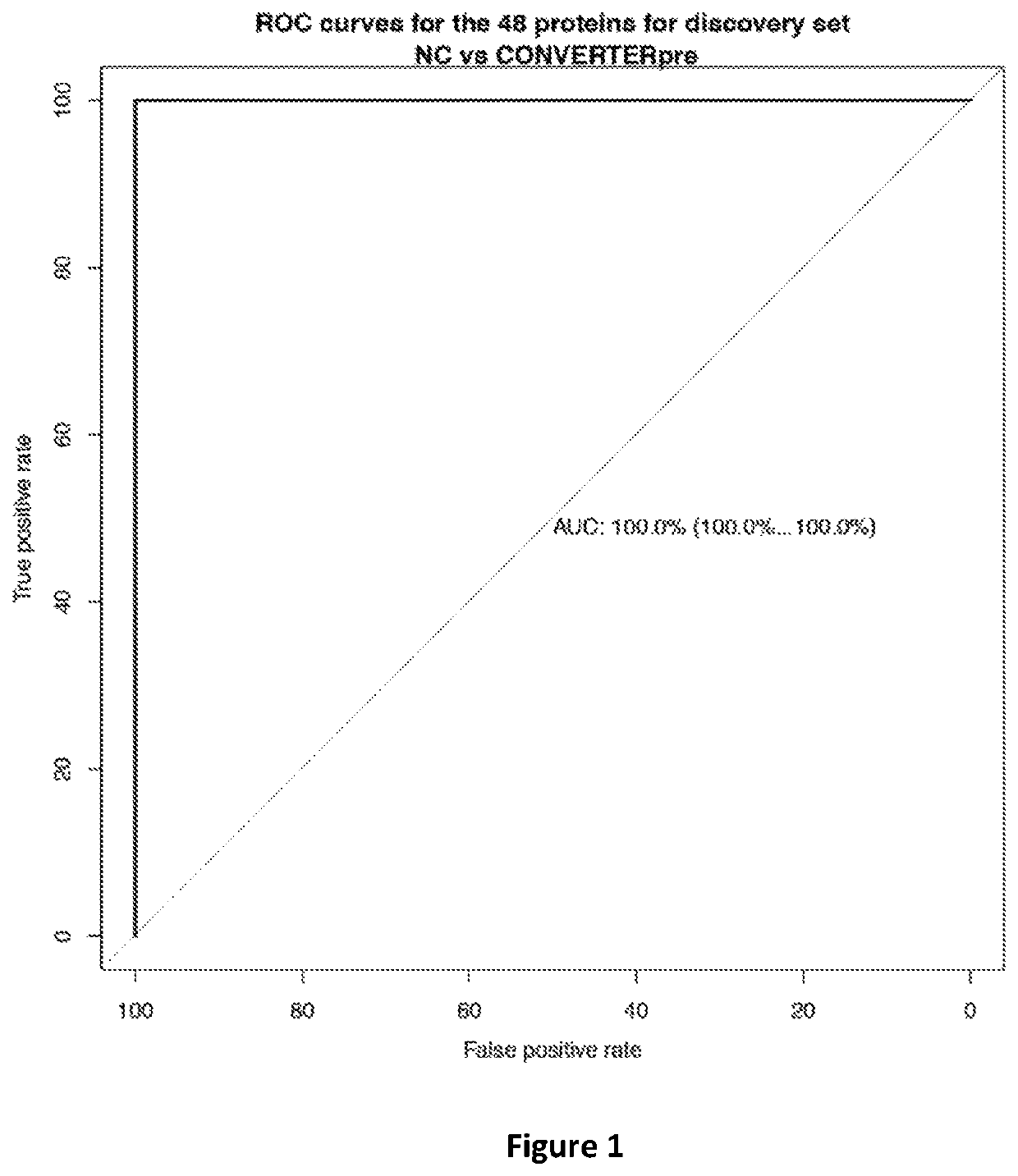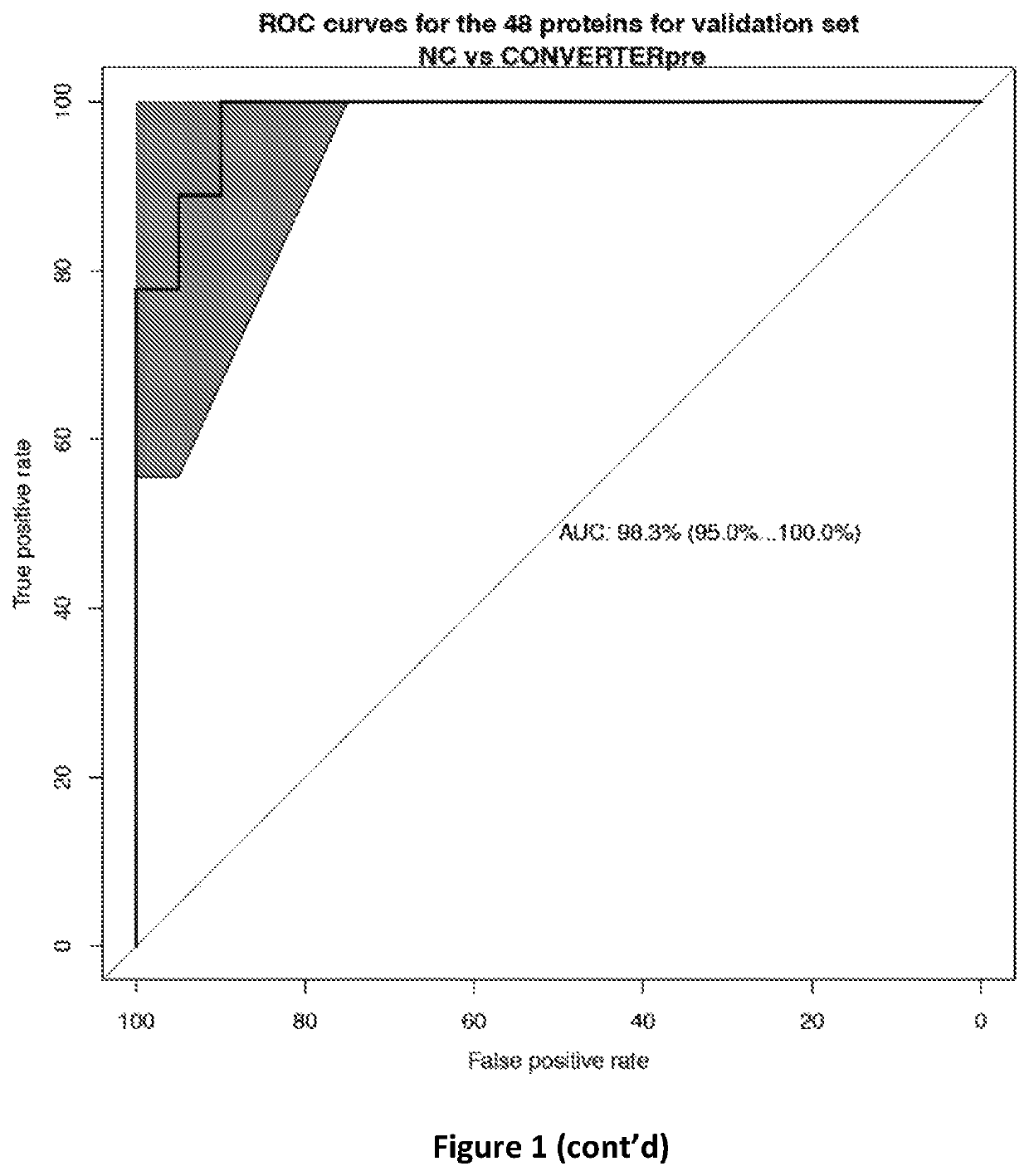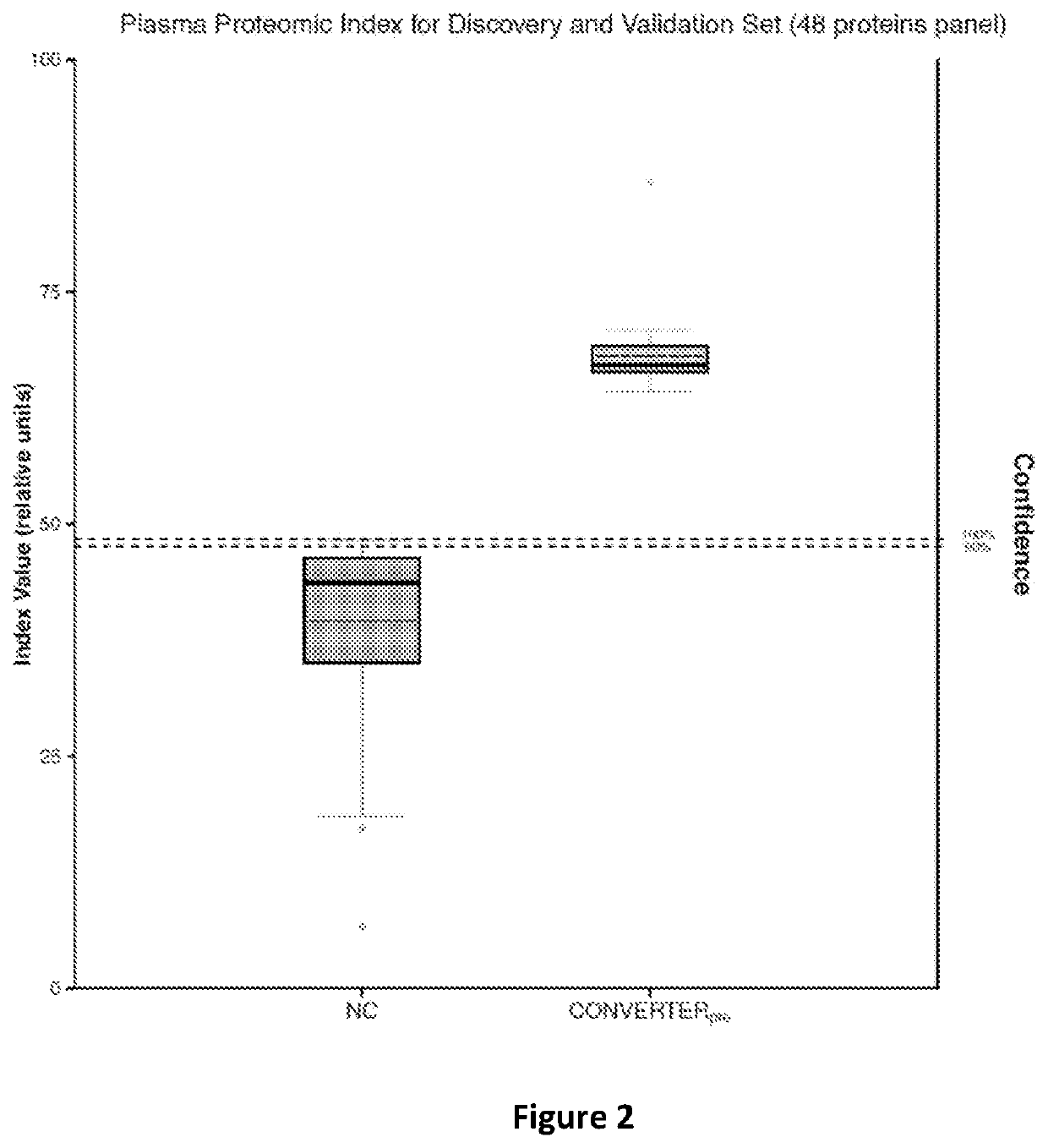Protein biomarkers for memory loss
a biomarker and memory loss technology, applied in the direction of peptide/protein ingredients, instruments, ict adaptation, etc., can solve the problems of inability no cure, and current therapies are ineffective to slow down the progression of the diseas
- Summary
- Abstract
- Description
- Claims
- Application Information
AI Technical Summary
Benefits of technology
Problems solved by technology
Method used
Image
Examples
example 1
[0038]Neurocognitive Methods
[0039]A total of 525 volunteers participated in this study as part of the Rochester / Orange County Aging Study (R / OCAS), an ongoing natural history study of cognition in community-dwelling older adults. Briefly, participants were followed with yearly cognitive assessments and blood samples were collected following an overnight fast and withholding of all medications. At baseline and each yearly visit, participants completed assessments in such as activities in daily living, memory complaints, signs and symptoms of depression, and were administered a detailed cognitive assessment.
[0040]For this study, data from the cognitive tests were used to classify participants into groups for biomarker discovery. Standardized scores (Z-scores) were derived for each participant on each cognitive test and the composite Z-scores were computed for five cognitive domains (attention, executive, language, memory, visuoperceptual) (Table 2).
[0041]
TABLE 2AttentionExecutiveLangu...
example 2
[0049]Protein Statistical Analyses
[0050]Once the proteins were extracted and quantified, the m / z features of proteins were normalized with log transformation that stabilized the variance followed with a quantile normalization to make the empirical distribution of intensities the same across samples. The proteins were selected among all those known to be identifiable using a ROC regularized learning technique, based on the least absolute shrinkage and selection operator (LASSO) penalty as implemented with the R package ‘glmnet’, which uses cyclical coordinate descent in a pathwise fashion. The regularization path over a grid of values was obtained for the tuning parameter lambda through 10-fold cross-validation. The optimal value of the tuning parameter lambda, which was obtained by the cross-validation procedure, was then used to fit the model. All the features with non-zero coefficients were retained for subsequent analysis. The classification performance of the selected proteins w...
PUM
| Property | Measurement | Unit |
|---|---|---|
| time | aaaaa | aaaaa |
| affinity | aaaaa | aaaaa |
| molecular weight | aaaaa | aaaaa |
Abstract
Description
Claims
Application Information
 Login to View More
Login to View More - R&D
- Intellectual Property
- Life Sciences
- Materials
- Tech Scout
- Unparalleled Data Quality
- Higher Quality Content
- 60% Fewer Hallucinations
Browse by: Latest US Patents, China's latest patents, Technical Efficacy Thesaurus, Application Domain, Technology Topic, Popular Technical Reports.
© 2025 PatSnap. All rights reserved.Legal|Privacy policy|Modern Slavery Act Transparency Statement|Sitemap|About US| Contact US: help@patsnap.com



